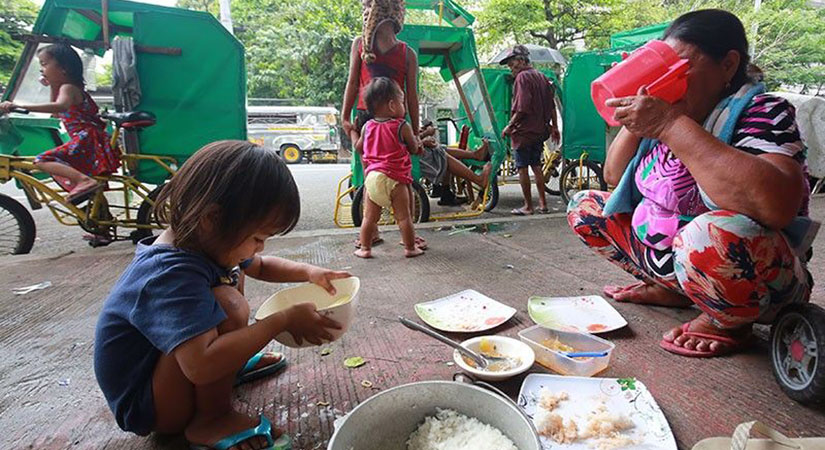
Pilipinas Kontra Gutom, an anti-hunger coalition, launched a program that aims to feed children and educate mothers on proper nourishment. Called Kain Tayo Pilipinas, the multisectoral initiative hopes to end child malnutrition by 2030, in line with Sustainable Development Goals set up by the United Nations.
“Companies and non-government organizations (NGOs) have attempted to feed children, but it’s not sustainable,” said Kristine Alvarez-Go, project lead of Kain Tayo Pilipinas, at the virtual launch. “When they go home, they go home to families that can’t sustain nutrition due to lack of education and resources.”
Educating a mother and teaching her to provide nourishment on a budget, said Ms. Alvarez-Go, automatically reaches at least three children. The initiative will focus on children in the first 1,000 days of their life (and not just schoolchildren as previous feeding programs did).
“A child’s brain is 80% developed by age three. Between age zero to five is the important period where we can make the biggest impact,” she said.
Cabinet Secretary and Task Force Zero Hunger Chairman Karlo Alexei B. Nograles highlighted the importance of ending involuntary hunger and malnutrition in the Philippines once and for all, citing a Social Weather Stations (SWS) survey that revealed 4.2 million Filipinos went hungry in 2020.
He also emphasized that the multisectoral approach would be best for this initiative, with Pilipinas Kontra Gutom growing to almost 80 member companies from just six in November.
Echoing Mr. Nograles’s call for collaboration, Ms. Alvarez-Go said: “In the past, each private, public, or government agency or foundation would operate in isolation. We each do our own program, mostly feeding, some education, some reaching kids, some reaching mothers too, but the programs we all work on separately have a high chance of duplication.”
By tracking each organization’s programs, she reported that Kain Tayo Pilipinas had identified 49 critical areas across the Philippines, with 22 of them already serviced by member companies. The remaining 27 areas can be moved or allocated to members.
“The essence and beauty of this project is the fact we are all coming together. We have 80 members now but we can always use more,” Ms. Alvarez-Go said. “And we’re not asking you to change your existing program. We are accepting all programs already out there. We just want to make it even stronger.” — Brontë H. Lacsamana



